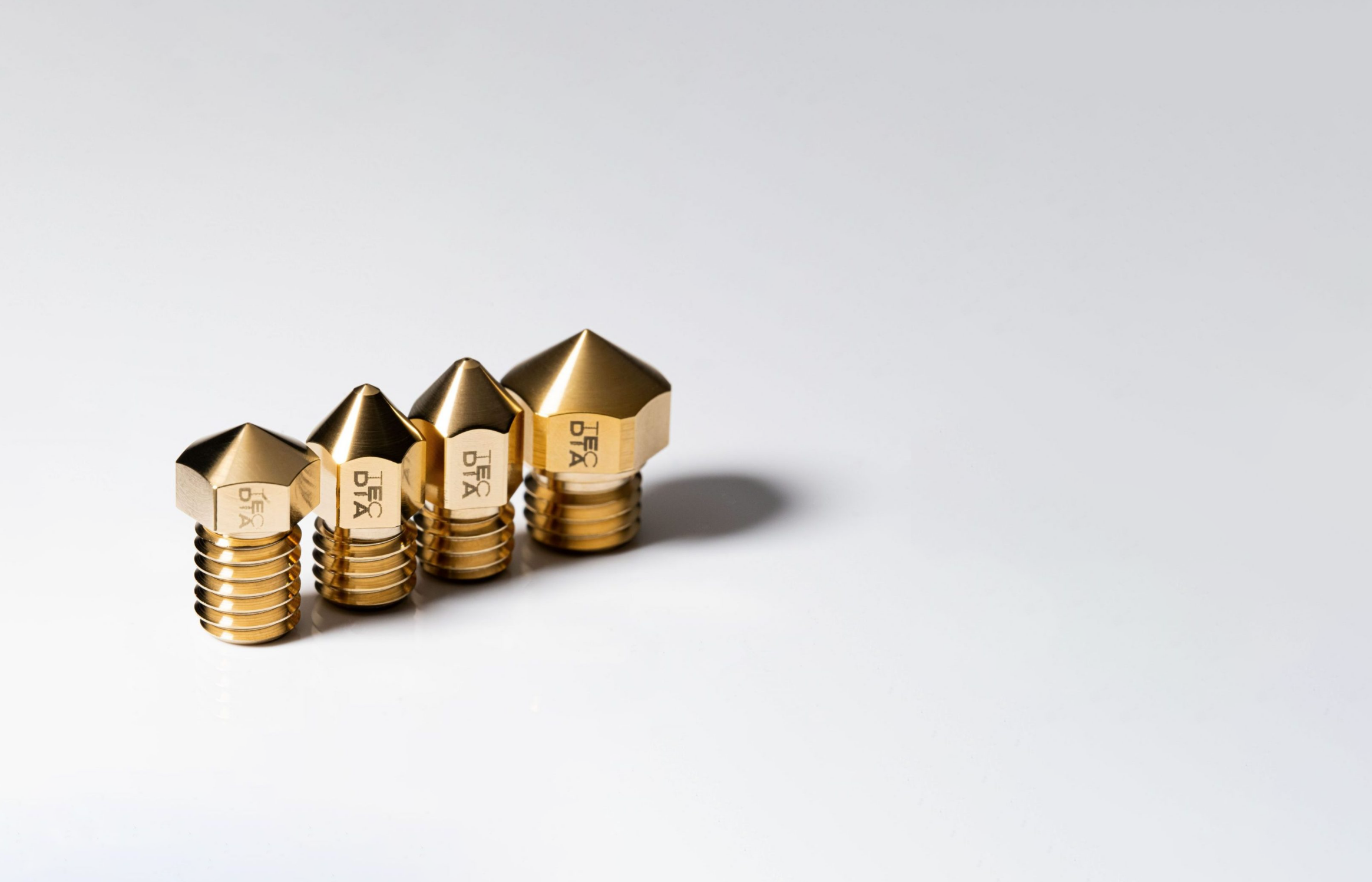



There has been a growing demand for more precise 3D printing.
Currently, the low-cost 3D printers available in the market utilize the Fused Deposition Modeling (FDM) method, which involves melting resin to build objects layer by layer. Compared to other fabrication methods like Laser Sintering, FDM exhibits lower precision and necessitates post-processing steps such as cutting, grinding, and heat treatment. To eliminate these complexities, the demand for 3D printing that enables precise and high-quality fabrication down to the finest details has been on the rise.
We have successfully developed a 3D printer head nozzle that enables intricate microfabrication.
Precision 3D printing necessitates dedicated 3D printer head nozzles that ensure seamless flow, no clogging, and controlled micro-deposition. This requirement hinges on two key factors: A: Fluidity (flowability), B: Irregular flow (turbulence). Both of these are heavily influenced by the quality of the nozzle’s interior (surface roughness *¹, tip angle *², and steps *³)


“Surface Roughness *¹… Refers to the smoothness of the nozzle’s inner surface. It affects the friction occurring between the nozzle’s interior and the coating material. Tip Angle *²… Denotes the angle of the straight portion at the tip. It influences the resistance encountered by the flowing coating material. Steps *³… Signifies the irregularities observed on the straight portion of the tip. These irregularities can lead to erratic flow of the coating material.
A: The decrease in flowability is attributed to the surface roughness of the nozzle’s interior and the tip angle.

As the surface roughness increases, friction also intensifies. The surface roughness of Company A’s 3D printer head nozzle is 0.909Ra. This includes deeper scratches and small irregularities that are likely a result of processing, leading to higher friction. On the other hand, Tecdia’s 3D printer head nozzle boasts a surface roughness of 0.267Ra, free from scratches or irregularities, resulting in minimal negative impact on flowability.

The larger the obtuse angle of the tip becomes, the greater the resistance encountered. Company B’s 3D printer head nozzle has an angle of 70°, indicating higher resistance. The common angle for precision nozzles, which are required for ultrafine deposition, is around 30°. Tecdia’s 3D printer head nozzle also maintains an angle of 30°, ensuring smooth flow and precise deposition.
B: The cause of irregular flow is attributed to the steps present at the tip of the nozzle.

The presence of steps on the straight portion of the tip makes turbulent flow more likely. These steps are commonly observed even in precision nozzles due to the need to prevent tool breakage when machining sharp tip angles. Company C’s 3D printer head nozzle, having steps, tends to lead to irregular flow. In contrast, Tecdia’s 3D printer head nozzle, despite its small tip angle, features a step-free design that reduces the likelihood of irregular flow.
Drawing upon our expertise and know-how cultivated through customized manufacturing, we achieve a high-quality interior for the nozzle.
Tecdia has established itself as a specialist in dispenser nozzles, providing custom-made nozzles to various industries such as automotive component assembly, aerospace research and development, and medical reagent coating. Leveraging the proprietary technology and know-how gained from these experiences, we have successfully manufactured 3D printer head nozzles that surpass those of other companies.
Introducing a high-performance 3D printer head nozzle that ensures clog-free operation and precise micro-deposition.
Our transition from other manufacturers’ 3D printer head nozzles to Tecdia’s 3D printer head nozzles has a proven track record of enhancing fabrication accuracy. If you are aiming for more precise and accurate 3D printing, we strongly recommend switching to Tecdia’s nozzles. We are dedicated to meeting your needs with 3D printer head nozzles tailored to your specifications.
–
 +1-408-748-0100
+1-408-748-0100
Office Hours: 8:30am - 5:30pm PST
